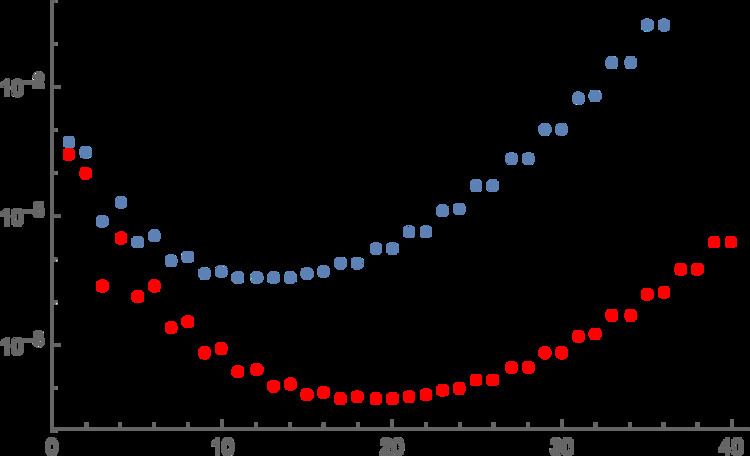 | ||
In mathematics, an asymptotic expansion, asymptotic series or Poincaré expansion (after Henri Poincaré) is a formal series of functions which has the property that truncating the series after a finite number of terms provides an approximation to a given function as the argument of the function tends towards a particular, often infinite, point. Deep investigations by Dingle reveal that the divergent part of an asymptotic expansion is latently meaningful, i.e. contains information about the exact value of the expanded function.
Contents
- Formal definition
- Examples of asymptotic expansions
- Detailed example
- Uniqueness for a given asymptotic scale
- Non uniqueness for a given function
- Subdominance
- References
The most common type of asymptotic expansion is a power series in either positive or negative powers. Methods of generating such expansions include the Euler–Maclaurin summation formula and integral transforms such as the Laplace and Mellin transforms. Repeated integration by parts will often lead to an asymptotic expansion.
Since a convergent Taylor series fits the definition of asymptotic expansion as well, the phrase "asymptotic series" usually implies a non-convergent series. Despite non-convergence, the asymptotic expansion is useful when truncated to a finite number of terms. Typically, the best approximation is given when the series is truncated at the smallest term. This way of optimally truncating an asymptotic expansion is known as superasymptotics. The error is then typically of the form
See asymptotic analysis, big O notation, and little o notation for the notation used in this article.
Formal definition
First we define an asymptotic scale, and then give the formal definition of an asymptotic expansion.
If φn is a sequence of continuous functions on some domain, and if L is a limit point of the domain, then the sequence constitutes an asymptotic scale if for every n,
If f is a continuous function on the domain of the asymptotic scale, then f has an asymptotic expansion of order N with respect to the scale as a formal series
or
If one or the other holds for all N, then we write
In contrast to a convergent series for
Examples of asymptotic expansions
Detailed example
Asymptotic expansions often occur when an ordinary series is used in a formal expression that forces the taking of values outside of its domain of convergence. Thus, for example, one may start with the ordinary series
The expression on the left is valid on the entire complex plane
after the substitution
Here, the right hand side is clearly not convergent for any non-zero value of t. However, by truncating the series on the right to a finite number of terms, one may obtain a fairly good approximation to the value of
Uniqueness for a given asymptotic scale
For a given asymptotic scale
where
Non-uniqueness for a given function
A given function
Subdominance
An asymptotic expansion may be asymptotic expansion to more than one function.
